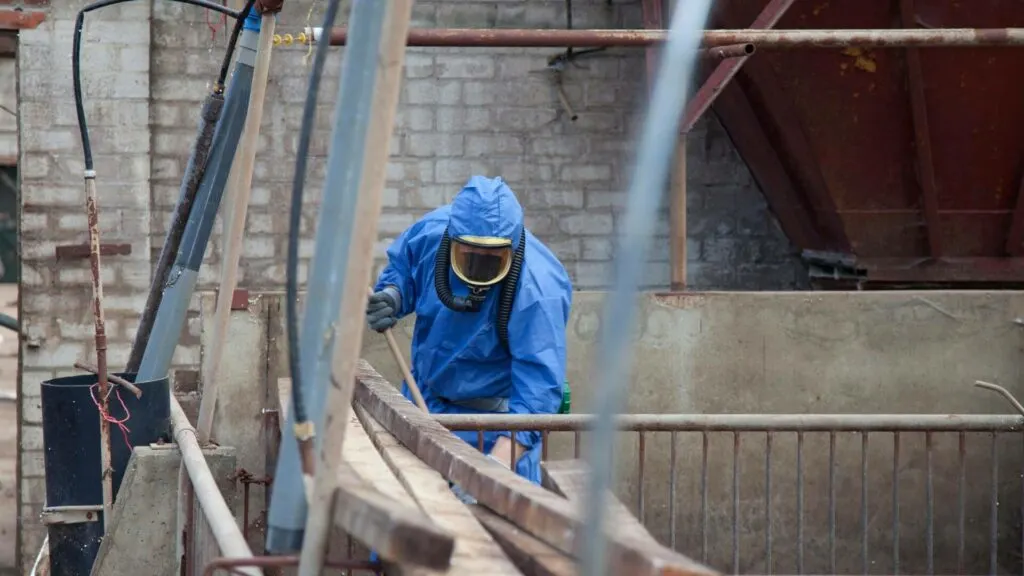It can be easy to take for granted the safety of our homes, workplaces, and environment; however, sometimes, the invisible threats are just as dangerous as those we often worry about. When it comes to hazardous materials, asbestos is one of the most notorious products due to its high potential for causing severe illnesses, even at low exposure levels. Despite being largely outlawed in many countries around the world since 1999, this deadly material remains a constant threat – one which requires vigilance and precaution if we are to avoid contracting life-altering diseases like mesothelioma or lung cancer. This document seeks to illuminate the often shadowy understanding surrounding asbestos, its uses, and its inherent dangers.

Overview of Asbestos
Asbestos is a term used to refer to six naturally occurring silicate minerals. These minerals are composed of thin, fibrous crystals, with each visible fiber composed of millions of microscopic ‘fibrils’ that can be released through abrasion or other processes. Despite its insidious health dangers, asbestos was widely used in the 20th century for its desirable physical properties. It was an effective insulator with high heat resistance, making it valuable in construction, shipbuilding, and even the automotive industry.
However, microscopic fibers are released into the air when asbestos is disturbed. Once inhaled, these fibers can cause serious health problems. Asbestos has been linked to several respiratory diseases, including asbestosis – an inflammatory condition affecting the lungs that can cause shortness of breath and coughing and eventually lead to lung damage – and lung cancer. For those diagnosed with lung cancer or other asbestos-related illnesses, pursuing lung cancer compensation may be an option. This can help cover medical expenses, lost wages, and other damages resulting from asbestos exposure. Legal processes can assist affected individuals in holding responsible parties accountable. Mesothelioma, a rare form of cancer that affects the lining of the lungs, chest cavity, or abdomen, is almost exclusively caused by exposure to asbestos.
The primary risk associated with asbestos exposure is that the fibers can become lodged in the lungs and other areas of the body, causing inflammation and scarring over time. This can eventually lead to serious diseases like lung cancer or mesothelioma, which may not manifest until years or even decades after the initial exposure. In addition, the risk of secondary exposure – where individuals who come into contact with asbestos workers or materials can also be affected – is a serious concern. This is why proper safety measures, such as wearing protective gear and adhering to strict regulations, are necessary when working with materials containing asbestos.
Why Asbestos Exposure is Dangerous
Asbestos exposure poses significant health risks primarily due to the physical properties of its fibrous crystals. These fibers can be inhaled when disturbed, causing severe and often fatal diseases. The reasons that make asbestos exposure dangerous are:

- Inhalation of Asbestos Fibers: The inhalation of asbestos fibers is the primary route for its harmful effects. Once airborne, these tiny fibers can be easily breathed into the lungs, where they can cause significant damage over time. Due to their sharp, needle-like structure and chemical resistance, these fibers are not easily expelled or broken down by the body, leading to chronic inflammation and scarring.
- Long Latency Period: Diseases related to asbestos exposure often have a long latency period, meaning symptoms might not appear for 10 to 50 years post-exposure. This delay can lead to late diagnosis and, consequently, less effective treatment options. Unfortunately, when the diseases become apparent, they are often in advanced stages and more difficult to treat.
- No Safe Level of Exposure: There is no known safe level of asbestos exposure. Even brief or low-level exposure can cause significant health problems years later. This further underscores the need for extreme caution and strict adherence to safety protocols when dealing with materials that might contain asbestos.
- Risk of Secondary Exposure: Secondary asbestos exposure is also a serious concern, as individuals can be affected simply by being near asbestos workers or materials. This risk highlights the importance of proper disposal and handling procedures for asbestos-containing materials.
- Persistence of Asbestos in the Environment: Asbestos is resistant to degradation and can persist in the environment for extended periods, increasing the risk of exposure for future generations. This highlights the importance of proper containment and removal procedures when dealing with asbestos-containing materials.
The danger of asbestos exposure is heightened by the fact that symptoms of these diseases often do not appear until decades after exposure. This latency period results in delayed diagnosis and treatment, which can significantly worsen the prognosis. That’s why it is vital for anyone who has been exposed to asbestos to seek regular medical check-ups, even if they do not currently exhibit any symptoms.
In conclusion, asbestos is a hazardous material that has caused and continues to cause serious health problems. Proper precautions must be taken when working with or around asbestos materials, and regular medical check-ups are necessary for those exposed. As we continue to learn more about the dangers of asbestos, it is essential to raise awareness and educate others on how to protect themselves from this silent killer.
- Inhalation of Asbestos Fibers: The inhalation of asbestos fibers is the primary route for its harmful effects. Once airborne, these tiny fibers can be easily breathed into the lungs, where they can cause significant damage over time. Due to their sharp, needle-like structure and chemical resistance, these fibers are not easily expelled or broken down by the body, leading to chronic inflammation and scarring.
- Long Latency Period: Diseases related to asbestos exposure often have a long latency period, meaning symptoms might not appear for 10 to 50 years post-exposure. This delay can lead to late diagnosis and, consequently, less effective treatment options. Unfortunately, when the diseases become apparent, they are often in advanced stages and more difficult to treat.
- No Safe Level of Exposure: There is no known safe level of asbestos exposure. Even brief or low-level exposure can cause significant health problems years later. This further underscores the need for extreme caution and strict adherence to safety protocols when dealing with materials that might contain asbestos.
- Risk of Secondary Exposure: Secondary asbestos exposure is also a serious concern, as individuals can be affected simply by being near asbestos workers or materials. This risk highlights the importance of proper disposal and handling procedures for asbestos-containing materials.
- Persistence of Asbestos in the Environment: Asbestos is resistant to degradation and can persist in the environment for extended periods, increasing the risk of exposure for future generations. This highlights the importance of proper containment and removal procedures when dealing with asbestos-containing materials.
The danger of asbestos exposure is heightened by the fact that symptoms of these diseases often do not appear until decades after exposure. This latency period results in delayed diagnosis and treatment, which can significantly worsen the prognosis. That’s why it is vital for anyone who has been exposed to asbestos to seek regular medical check-ups, even if they do not currently exhibit any symptoms.
In conclusion, asbestos is a hazardous material that has caused and continues to cause serious health problems. Proper precautions must be taken when working with or around asbestos materials, and regular medical check-ups are necessary for those exposed. As we continue to learn more about the dangers of asbestos, it is essential to raise awareness and educate others on how to protect themselves from this silent killer.

Jessi is the creative mind behind The Coffee Mom, a popular blog that combines parenting advice, travel tips, and a love for all things Disney. As a trusted Disney influencer and passionate storyteller, Jessi’s authentic insights and relatable content resonate with readers worldwide.
